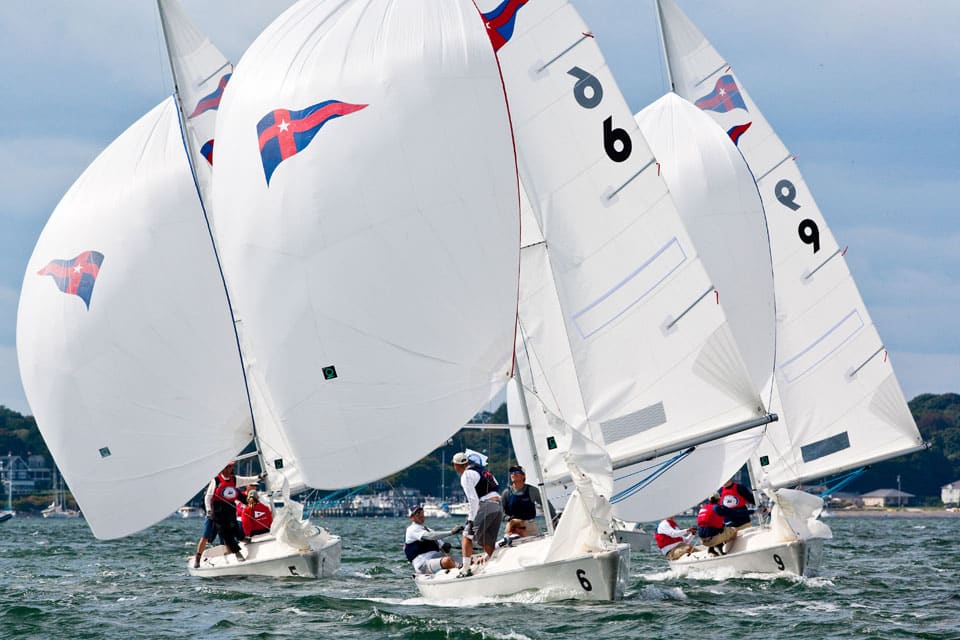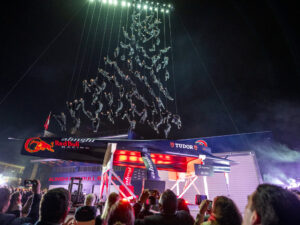
I’ve written frequently in this space about how fortunate we are to have so many great yacht clubs and public sailing facilities in the United States, most of them deeply rooted in the sport. The task of founding a new club today would be extremely difficult, if not impossible, which makes preserving what we have all the more important. Our clubs provide access to the water for many sailors, most of whom are older, and even though it’s been discussed over the past few years, clubs are still struggling to attract young members. The discussion must not only be about getting people through the club’s front door, but rather, on the water—this is the unique service every yacht club can provide.
The challenge for young adults building careers and families, however, is having the time and the budget to be active in sailing. Owning a boat is typically out of the question, and this is where yacht clubs can, and should, take a more proactive role in bridging the ownership divide through a club-owned or supported fleet program. This comes with one caveat, however: any yacht club considering a new fleet for its members must consider the implications of having too many small fleets in one area. When local classes fracture into small, disinterested groups, participation historically declines. It also becomes more difficult for race committees to manage a large number of disparate classes. To prevent this from happening, yacht club leaders must be bold.
Start by designating specific classes to be raced—and housed—on club property. This might require scrubbing some classes from the club’s racing schedule and drawing the ire of certain established club members, but the goal must be to grow participation for the good of the whole. A club’s fleet makeup should include designs that are relatively inexpensive and easy to maintain, and at least one that is popular elsewhere in the country. It is the responsibility of a club’s board of directors to figure out the best boats to race, and, separately, the best boats for education or recreation. If two individual fleets cannot be stored on a club’s property, or the membership is not large enough to support separate uses, then one dual-purpose design must be carefully chosen.
The designated classes should be appropriate for their sailing areas. For example, shallow bays should have boats with shoal drafts, light-wind areas need boats with powerful sail plans, and shifty venues should feature boats that are easy to maneuver. Depending on the breadth of the membership, I suggest that designated fleets number between three and six classes. In regions with many clubs in close proximity it would be worthwhile to host a conference with the goal of agreeing upon which boats might are most popular and best suited for the area. This process will be difficult because people are uncomfortable with change, especially owners who’ve invested years and resources in one particular boat. This concern is understandable, but if only a few are showing each week, it’s a signal for change.
About 20 years ago the Annapolis YC acquired a boatyard with a large inventory of diverse classes. The club conducted a membership survey to learn which one-design classes should be formally adopted. After the survey, several manufacturers and classes were invited to bring to their boats to Annapolis whereby a committee of club members ran a series of on-the-water tests. Selling this concept was a big task and bringing all stakeholders together was important. Once the sailors realized there would be better racing in bigger fleets, they became enthusiastic supporters. Ten potential owners stepped forward to purchase J/22s, and today there are more than 60.
Another method, which is particularly effective for smaller memberships, is to facilitate members buying boats as part of a syndicate or partnership. The Nantucket (Mass.) YC, for example, acquired a fleet of International One Designs, with each boat owned by a syndicate of two to four members. Every week the syndicates rotate boats and sails, which levels the competition and puts equal wear and tear on the equipment. The fleet purchases sails,and hires a fleet manager to maintain the boats. The fleet has grown to 15 boats, and every boat is on the water for the weekend racing in the summer.
Selecting the appropriate boat is one part of the process, and clubs also need to take steps to ensure launching is easy. Getting to the racecourse should require minimal time and effort. To help solve this vital problem, the Lake Geneva (Wisc.) YC designed a circular roadway around its property and added two hoists so boats could be hauled efficiently. The Annapolis YC installed three hoists so an entire fleet could be launched rapidly for weeknight racing. AYC also employs two drivers to move boats with small tractors during peak days.
There are several new classes that are thriving, and these smaller sportboats are designed with the club in mind: easy to launch, trailerable, and compact. They can be used for both junior and adult instruction, are great for team racing, match racing, and fleet racing. Club membership and usage will increase when sailing programs are vibrant. Once a strong one-design racing schedule is established, the next step is for yacht clubs to improve their amenities. These might include a building for meetings, social gatherings, or boat and sail measurement. Other ideas include building a bar close to the boat park, placing notice boards near the boat storage area, or having sufficient spigots and hoses.
The primary mission of every yacht club is to provide waterfront access and promote boating at all levels. A fleet of club owned boats and limited designated classes are important steps for the board of directors at every yacht club to consider. If a fleet of new boats simply is not in the financial cards for the club, it wouldn’t be too much of a stretch to consider starting with a fleet of remote-control racing yachts. Young and old members alike could meet at the water’s edge for some spirited low-cost competition. It’s a toe in the water, so to speak, and maybe the start of something big.









